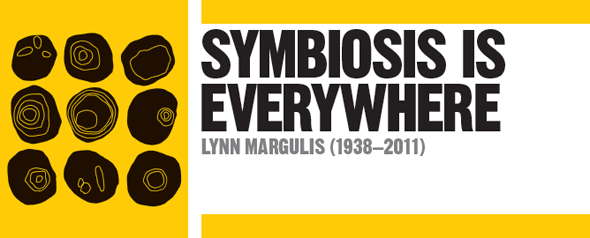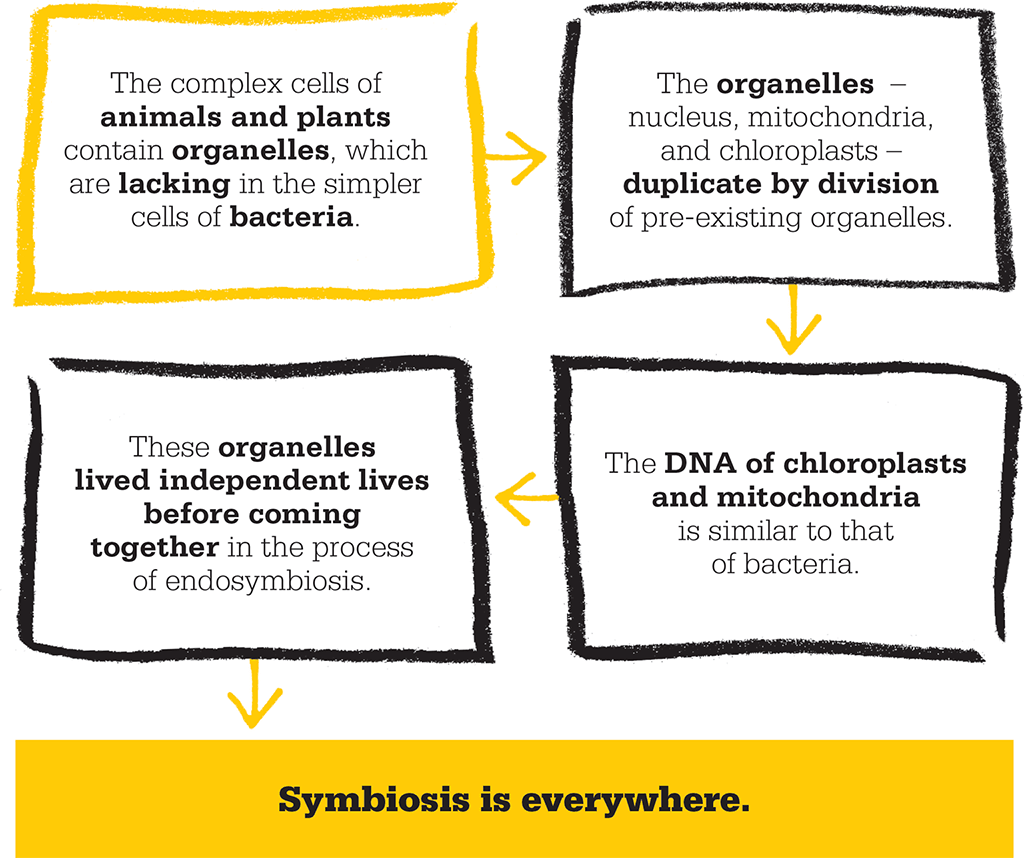
IN CONTEXT
Biology
1858 German doctor Rudolf Virchow proposes that cells arise only from other cells, and are not formed spontaneously.
1873 German microbiologist Anton de Bary coins the term “symbiosis” for different kinds of organisms living together.
1905 According to Konstantin Mereschkowsky, chloroplasts and nuclei originated by a process of symbiosis, but his theory lacks evidence.
1937 French biologist Edouard Chatton divides life forms by cell structure, into eukaryote (complex) and prokaryote (simple). His theory is rediscovered in 1962.
1970–75 US microbiologist Carl Woese discovers that chloroplast DNA is similar to that of bacteria.
Charles Darwin’s theory of evolution coincided with a cellular theory of life that emerged in the 1850s, asserting that all organisms were made of cells, and new cells could only come from existing ones by a process of division. Some of their internal components, such as food-making chloroplasts, apparently reproduced by division too.
This last discovery led Russian botanist Konstantin Mereschkowsky to the idea that chloroplasts may once have been independent life forms. Evolutionary and cellular biologists asked: how did complex cells arise? The answer lay in endosymbiosis – a theory that was first proposed by Mereschkowsky in 1905, but was only accepted after an American biologist called Lynn Sagan (later Margulis) furnished the evidence in 1967.
Complex cells with internal structures called organelles – the nucleus (which controls the cell), mitochondria (which release energy), and chloroplasts (which conduct photosynthesis) – are found in animals, plants, and many microbes. These cells, now called eukaryotic, evolved from simpler bacterial cells, which lack organelles and are now called prokaryotic. Mereschkowsky imagined primordial communities of the simpler cells – some making food by photosynthesis, others preying on their neighbours and engulfing them whole. Sometimes the engulfed cells were left undigested and, he suggested, became chloroplasts – but without proof, this theory of endosymbiosis (living together and within) faded.

New evidence
The invention of the electron microscope in the 1930s, combined with advances in biochemistry, helped biologists to unlock the inner working of cells. By the 1950s, scientists knew that DNA provided genetic instructions for carrying out life processes and was relayed from generation to generation. In eukaryotic cells, DNA is packaged in the nucleus, but it is also found in chloroplasts and mitochondria.
In 1967, Margulis used this discovery as evidence to revive and substantiate the endosymbiosis theory. She included the suggestion that there had been an oxygen “holocaust” in the early history of life on Earth. About two billion years ago, as photosynthesizers flourished, they saturated the world with oxygen, which poisoned many of the microbes around at the time. Predatory microbes survived by engulfing others that could “soak up” the oxygen in their energy-releasing processes. These became mitochondria: the “power packs” of cells today. At first, this appeared far-fetched to most biologists, but the evidence for Margulis’s theory gradually became persuasive, and it has now been widely accepted. For example, the DNA of mitochondria and chloroplasts are made from circular molecules – just like the DNA of living bacteria.
Evolution by cooperation was not something new: Darwin himself had conceived the idea to explain the mutually beneficial interplay between nectar-giving plants and pollinating insects. But few had thought it could happen so intimately – and fundamentally – as when cells merged together at the very dawn of life.

Mitochondria are organelles that make the energy-carrying chemical adenosine triphosphate (ATP) inside a eukaryotic cell. This mitochondrion has been falsely coloured blue.
LYNN MARGULIS

Lynn Alexander (later Sagan, then Margulis) entered Chicago University aged just 14, before gaining a PhD at the University of California, Berkeley. Her interests in the cellular diversity of organisms led her to revive and champion the evolutionary theory of endosymbiosis, which biologist Richard Dawkins has described as “one of the great achievements of 20th-century evolutionary biology”.
For Margulis, cooperative interactions were as important as competition in driving evolution – and she viewed living things as self-organizing systems. She later supported James Lovelock’s Gaia hypothesis that Earth, too, could be viewed as a self-regulating organism. In recognition of her work, she was made a member of the US National Academy of Science and received the National Medal of Science.
Key works
1967 On the Origin of Mitosing Cells
1970 Origin of Eukaryotic Cells
1982 Five Kingdoms: An Illustrated Guide to the Phyla of Life on Earth
See also: Charles Darwin • James Watson and Francis Crick • James Lovelock